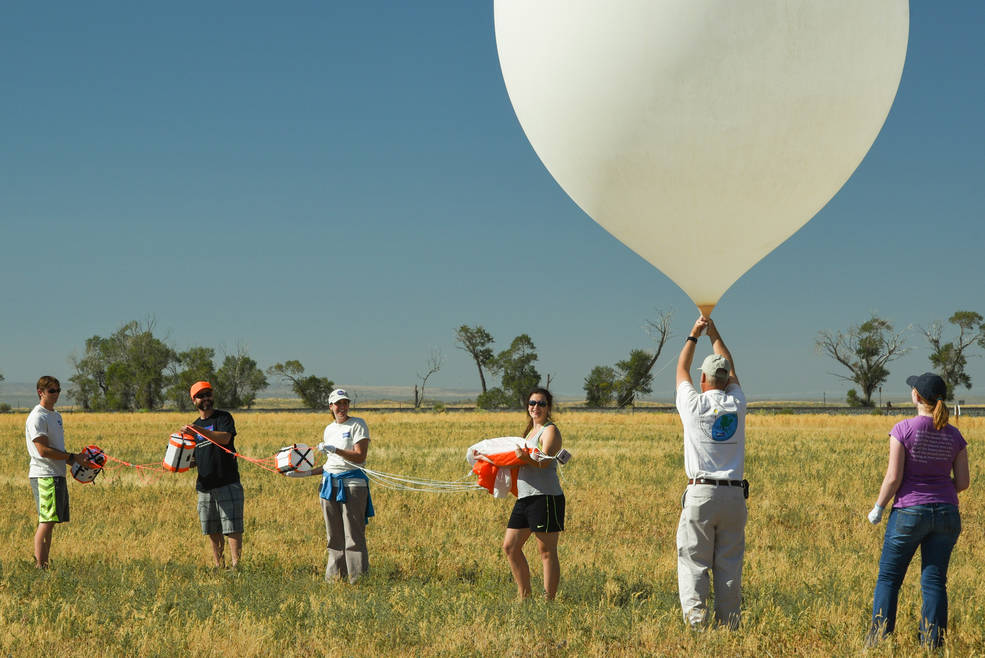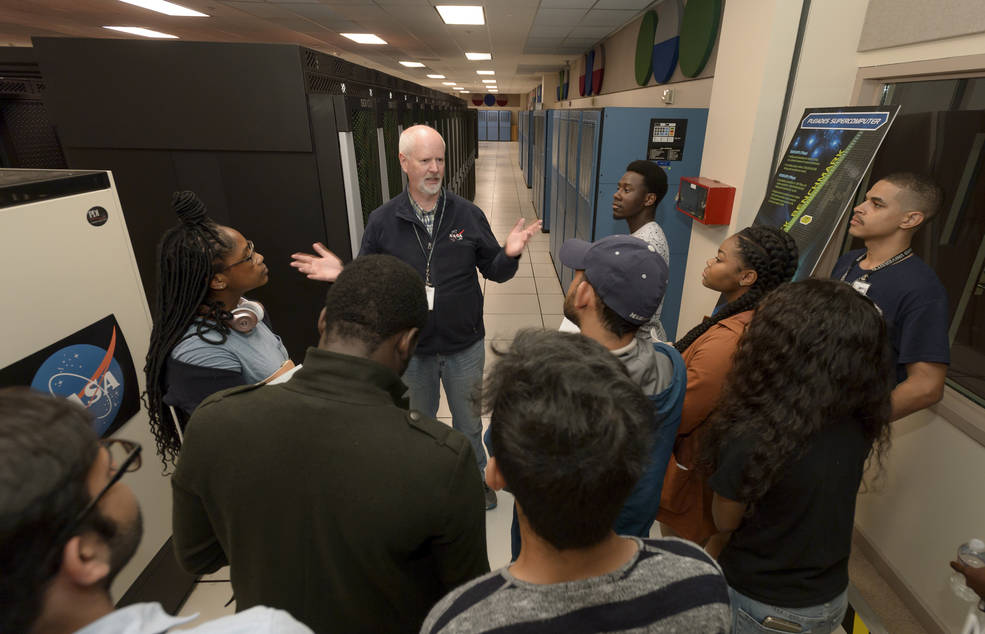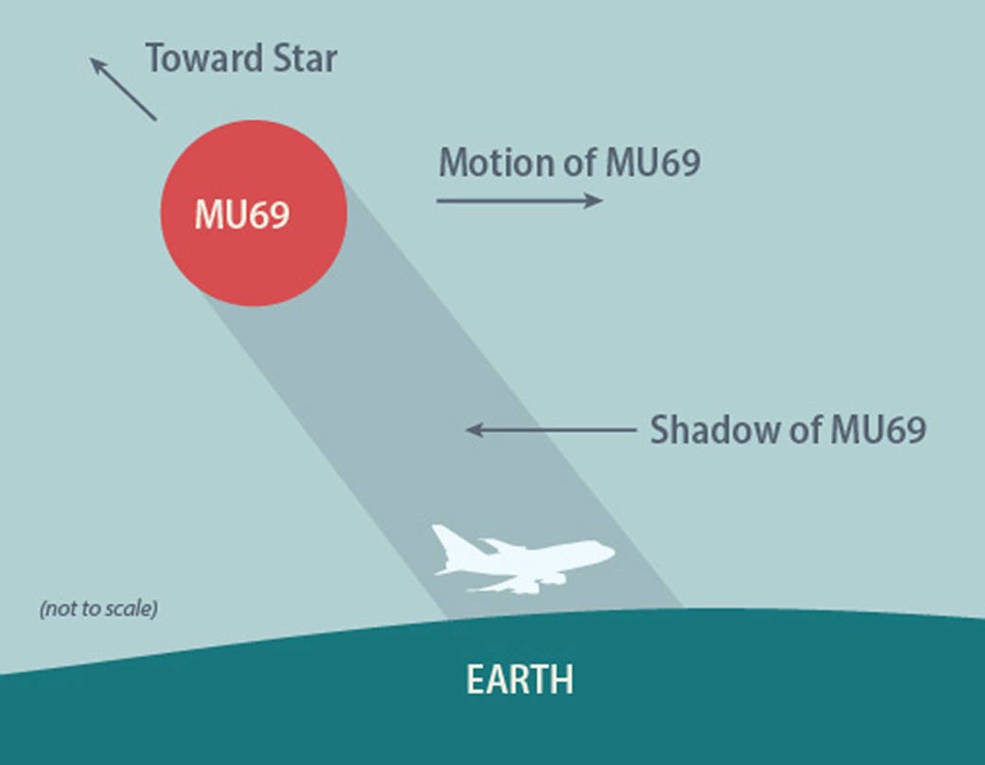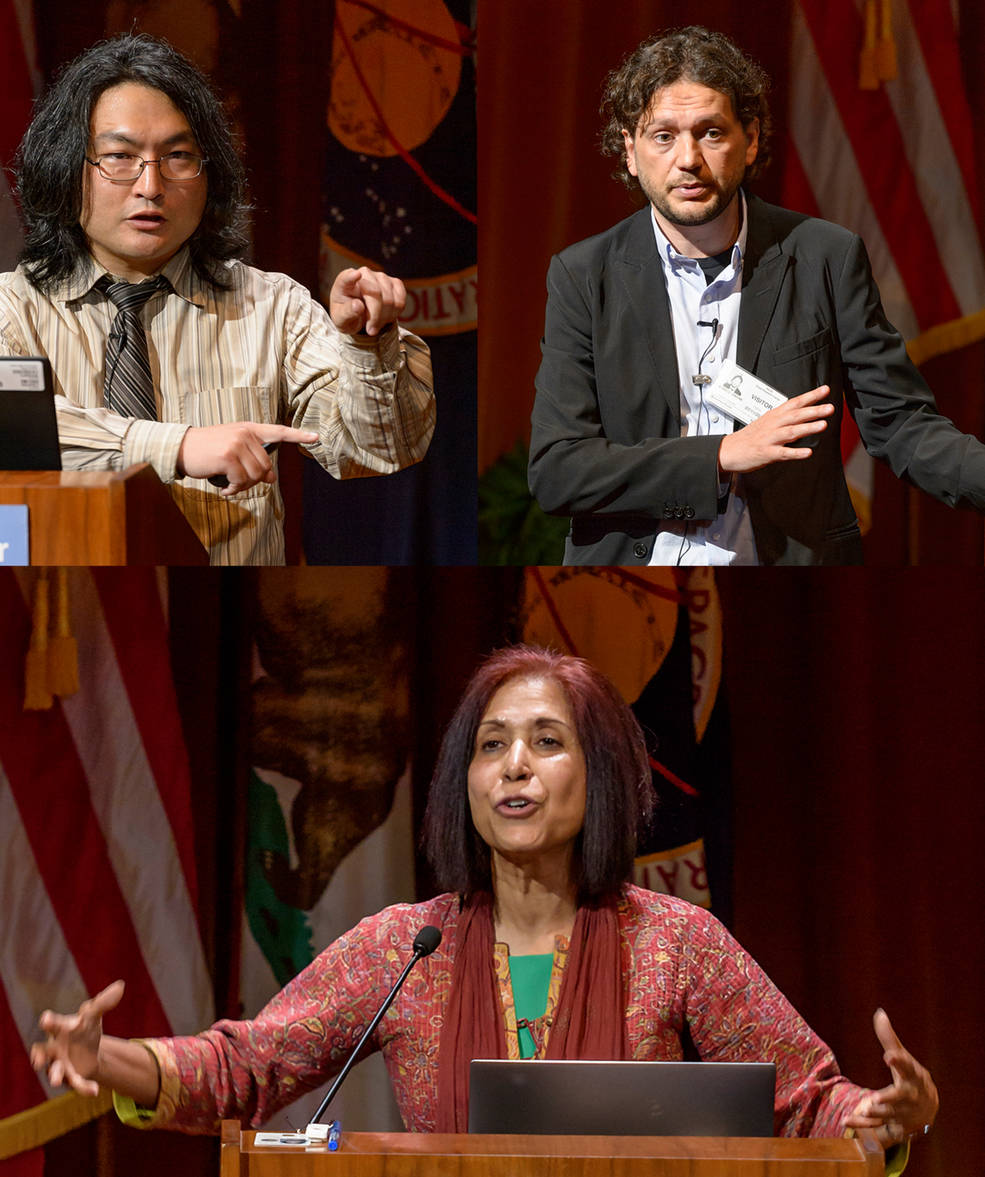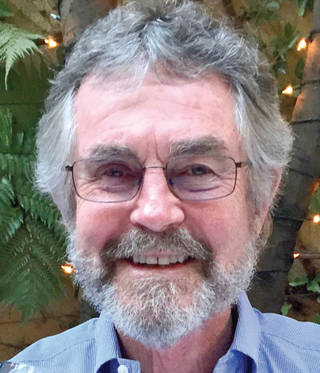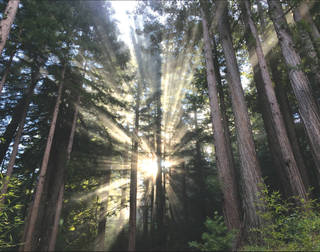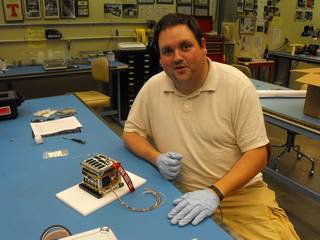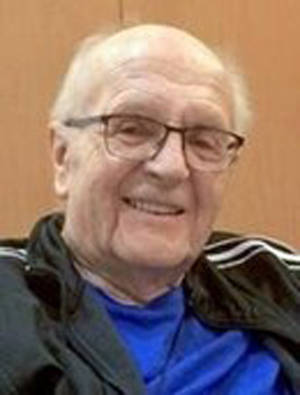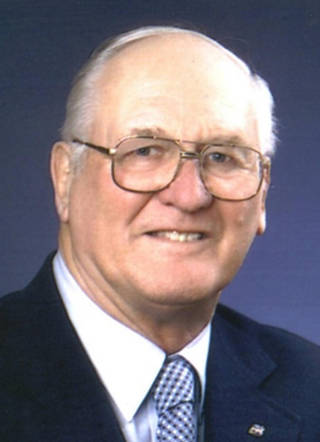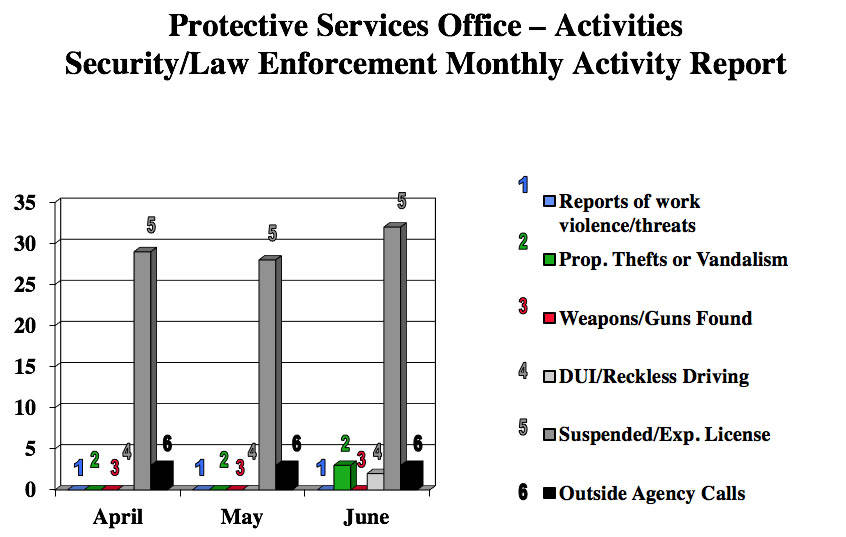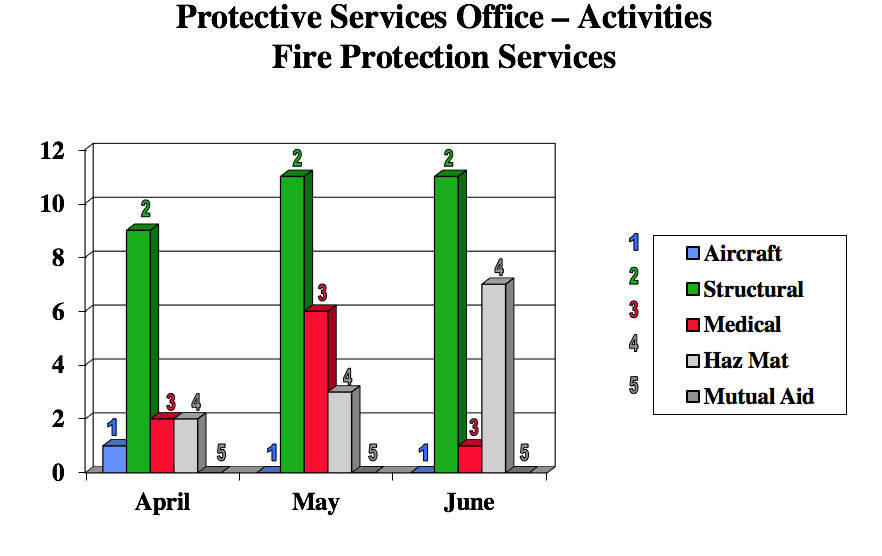Dark Side of the Crater: How Light Looks Different on the Moon and What NASA Is Doing About It
by Kimberly Minafra
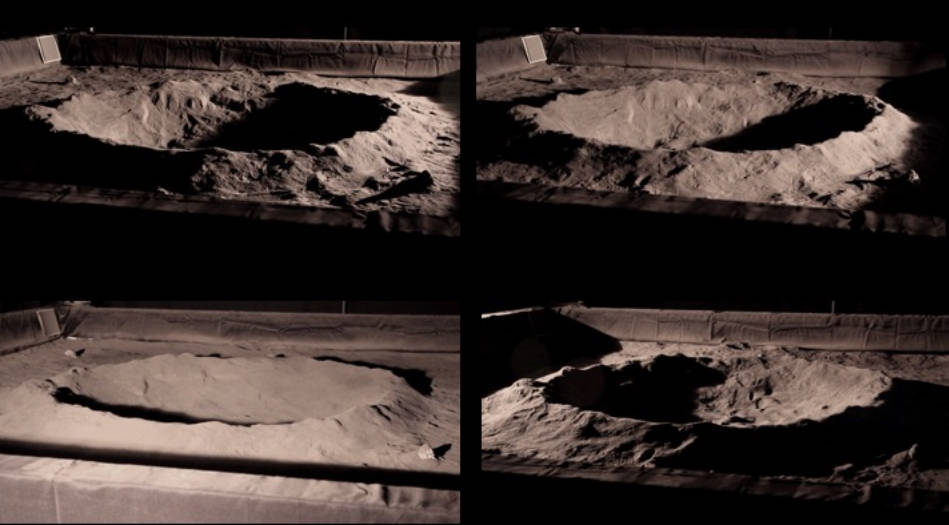
Things look different on the Moon. Literally.
Because the Moon isn’t big enough to hold a significant atmosphere, there is no air and there are no particles in the air to reflect and scatter sunlight. On Earth, shadows in otherwise bright environments are dimly lit with indirect light from these tiny reflections. That lighting provides enough detail that we get an idea of shapes, holes and other features that could be obstacles to someone – or some robot – trying to maneuver in shadow.
“What you get on the Moon are dark shadows and very bright regions that are directly illuminated by the Sun – the Italian painters in the Baroque period called it chiaroscuro – alternating light and dark,” said Uland Wong, a computer scientist at NASA Ames. “It’s very difficult to be able to perceive anything for a robot or even a human that needs to analyze these visuals, because cameras don’t have the sensitivity to be able to see the details that you need to detect a rock or a crater.”
In addition, the dust itself covering the Moon is otherworldly. The way light reflects on the jagged shape of individual grains, along with the uniformity of color, means it looks different if it’s lit from different directions. It loses texture at different lighting angles.
Some of these visual challenges are evident in Apollo mission surface images, but the early lunar missions mostly waited until lunar “afternoon” so astronauts could safely explore the surface in well-lit conditions.
Future lunar rovers may target unexplored polar regions of the Moon to drill for water ice and other volatiles that are essential, but heavy, to take on human exploration missions. At the Moon’s poles, the Sun is always near the horizon and long shadows hide many potential dangers in terrain like rocks and craters. Pure darkness is a challenge for robots that need to use visual sensors to safely explore the surface.
Wong and his team in Ames’ Intelligent Robotics Group are tackling this by gathering real data from simulated lunar soil and lighting.
“We’re building these analog environments here and lighting them like they would look on the Moon with solar simulators, in order to create these sorts of appearance conditions,” said Wong. “We use a lot of 3-dimensional imaging techniques, and use sensors to create algorithms, which will both help the robot safeguard itself in these environments, and let us train people to interpret it correctly and command a robot where to go.”
The team uses a ‘Lunar Lab’ testbed at Ames – a 12-foot-square sandbox containing eight tons of JSC-1A, a human-made lunar soil simulant. Craters, surface ripples and obstacles are shaped with hand tools, and rocks are added to the terrain in order to simulate boulder fields or specific obstacles. Then they dust the terrain and rocks with an added layer of simulant to produce the “fluffy” top layer of lunar soil, erasing shovel and brush marks, and spreading a thin layer on the faces of rocks. Each terrain design in the testbed is generated by statistics based on common features observed from spacecraft around the Moon.
Solar simulator lights are set up around the terrain to create Moon-accurate low-angle, high-contrast illumination. Two cameras, called a stereo imaging pair, mimic how human eyes are set apart to help us perceive depth. The team captured photographs of multiple testbed setups and lighting angles to create a dataset to inform future rover navigation.
“But you can only shovel so much dirt; we are also using physics-based rendering, and are trying to photo-realistically recreate the illumination in these environments,” said Wong. “This allows us to use a supercomputer to render a bunch of images using models that we have decent confidence in, and this gets us a lot more information than we would taking pictures in a lab with three people, for example.”
The result, a Polar Optical Lunar Analog Reconstruction or POLAR dataset, provides standard information for rover designers and programmers to develop algorithms and set up sensors to safely navigate. The POLAR dataset is applicable not only to our Moon, but to many types of planetary surfaces on airless bodies, including Mercury, asteroids, and regolith-covered moons like Mars’ Phobos.
So far, early results show that stereo imaging is promising for use on rovers that will explore the lunar poles.
“One of the mission concepts that’s in development right now, Resource Prospector, that I have the privilege of working on, might be the first mission to land a robot and navigate in the polar regions of the Moon,” said Wong. “And in order to do that, we have to figure out how to navigate where nobody’s ever been.”
This research is funded by the agency’s Advanced Exploration Systems and Game Changing Development programs. NASA’s Solar System Exploration Research Virtual Institute provides the laboratory facilities and operational support.
Eclipse Balloons to Study Effect of Mars-Like Environment on Life
by Andrew Schurr and Frank Tavares
Steps forward in the search for life beyond Earth can be as simple as sending a balloon into the sky. In one of the most unique and extensive eclipse observation campaigns ever attempted, NASA is collaborating with student teams across the U.S. to do just that.
A larger initiative, NASA’s Eclipse Balloon Project, led by Angela Des Jardins of Montana State University, is sending more than 50 high-altitude balloons launched by student teams across the U.S. to livestream aerial footage of the Aug. 21, 2017, total solar eclipse from the edge of space to NASA’s website.
“Total solar eclipses are rare and awe-inspiring events. Nobody has ever live-streamed aerial video footage of a total solar eclipse before,” said Angela Des Jardins. “By live-streaming it on the internet, we are providing people across the world an opportunity to experience the eclipse in a unique way, even if they are not able to see the eclipse directly.”
A research group at NASA Ames is seizing the opportunity to conduct a low-cost experiment on 34 of the balloons called MicroStrat, to simulate life’s ability to survive beyond Earth – and maybe even on Mars.
“The August solar eclipse gives us a rare opportunity to study the stratosphere when it’s even more Mars-like than usual,” said Jim Green, director of planetary science at NASA Headquarters. “With student teams flying balloon payloads from dozens of points along the path of totality, we’ll study effects on microorganisms that are coming along for the ride.”
NASA will provide each team with two small metal cards, each the size of a dog tag. The cards have harmless, yet environmentally- resilient bacteria dried onto their surface. One card will fly up with the balloon while the other remains on the ground. A comparison of the two will show the consequences of the exposure to Mars-like conditions, such as bacterial survival and any genetic changes.
The results of the experiment will improve NASA’s understanding of environmental limits for terrestrial life, in order to inform our search for life on other worlds.
Mars’ atmosphere at the surface is about 100 times thinner than Earth’s, with cooler temperatures and more radiation. Under normal conditions, the upper portion of our stratosphere is similar to these Martian conditions, with its cold, thin atmosphere and exposure to radiation, due to its location above most of Earth’s protective ozone layer. Temperatures where the balloons fly can reach -35 degrees Fahrenheit or colder, with pressures about a hundredth of that at sea level.
During the eclipse, the similarities to Mars only increase. The Moon will buffer the full blast of radiation and heat from the Sun, blocking certain ultraviolet rays that are less abundant in the Martian atmosphere and bringing the temperature down even further.
“Performing a coordinated balloon microbiology experiment across the entire continental United States seems impossible under normal circumstances,” said David J. Smith of Ames, principal investigator for the experiment and mentor for the Space Life Science Training Program, the intern group developing flight hardware and logistics for this study. “The solar eclipse on August 21st is enabling unprecedented exploration through citizen scientists and students. After this experiment flies, we will have about 10 times more samples to analyze than all previously-flown stratosphere microbiology missions combined.”
Beyond the opportunity for NASA to conduct science, this joint project provides the opportunity for students as young as ten years old to be exposed to the scientific method and astrobiology – research about life beyond Earth. Since ballooning is such an accessible and low-cost technique, the project has attracted student teams from Puerto Rico to Alaska.
The data collected by the teams will be analyzed by NASA scientists at Ames and NASA’s Jet Propulsion Laboratory; collaborators at Weill Cornell Medicine; scientists funded by the National Science Foundation and National Oceanographic and Atmospheric Administration; faculty members and students at the teams’ institutions, as well as the public.
“This project will not only provide insight into how bacterial life responds to Mars-like conditions, we are engaging and inspiring the next generation of scientists,” said Green. “Through this exciting ‘piggyback’ mission, NASA is collaborating with scientists of the future to take a small step in the search for life beyond our planet.”
Human Exploration, Science Studies and Apollo Missions Then and Now, Discussed at Forum
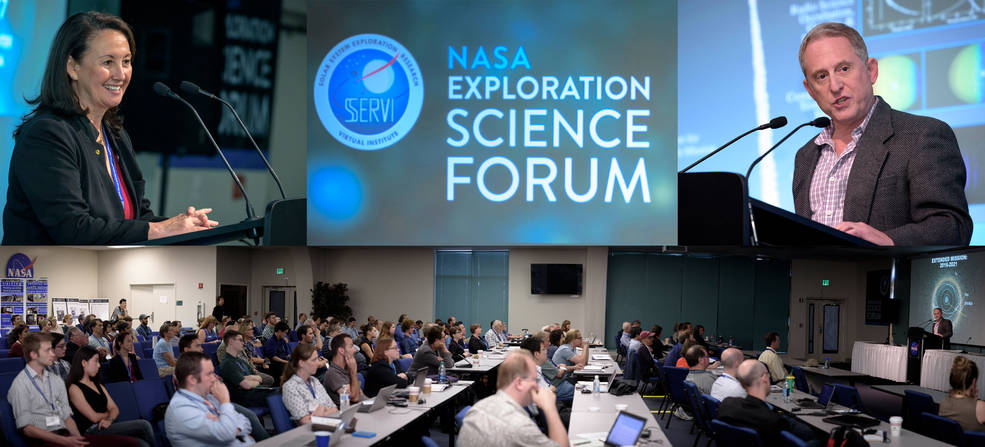
Ames Hosts Howard University Students
by Sharon Lozano
On June 30, 2017, 28 rising juniors from Howard West Applied Computer Science Program visited NASA’s Ames as a part of a Google emersion program to increase the number of African-Americans in the technology community. During a presentation by the Ames Education office, the students were given an overview of NASA’s Minority University Research and Education Project, and the Human Capital’s Workforce Development branch shared information on internships, fellowships, scholarships and pathways programs. And, the students learned how NASA’s IT Security Operations Center monitors and protects NASA assets from cyber attacks.
As part of the program, the students participated in tours at Ames and were shown “big data” visualizations on a Hyperwall presented by researchers at the NASA Advanced Supercomputing (NAS) facility, the home of Pleiades, one of the world’s most powerful super computers and the 1,097-qubit D-Wave 2X™ quantum computer. They learned about how NASA, Google and the Universities Space Research Association are collaborating to explore the potential for quantum computers to tackle optimization problems that are difficult or impossible for traditional super computers to handle.
The students visited technology labs in the Intelligent Systems Division, including NASA’s Unmanned Aerial Systems (UAS) Autonomy Research Complex, an indoor flight test facility that supports a wide range of small UAS projects for drones and aeronautics including the Safe Autonomous Flight Environment for the First/Last 50 Feet (SAFE50) project, which focuses on safe and autonomous flight operations for drones below 50 feet in urban landscapes.
In the Advanced Controls Technologies (ACT) Lab, students saw a “human-in-the-loop” simulation that demonstrates research and development capabilities for intelligent guidance, control, automation and autonomous technologies for aviation and aerospace systems. The lab’s pilot station has traditional tools such as a side stick and rudder pedals and a large display with a 120-degree out-the-window view to create a realistic simulation. The ACT lab allows rapid integration, development and part-task simulation evaluations of novel vehicle and human-system technologies.
Other tours included the Systems Health, Analytics, Resilience, and Physics-modeling (SHARP) lab, and the Synchronized Position Hold, Engage, Reorient Experimental Satellites (SPHERES) lab, where engineers designed and built free flying sphere-shaped robots to perform operations on board the International Space Station (ISS) that test a diverse range of hardware and software. They also saw a prototype of Astrobee, a new cube-shaped one-foot by one-foot robot designed to help scientists and engineers develop and test technologies that will soon be flying on ISS to help the astronaut crew do routine chores and give flight controllers in Houston additional eyes and ears on spacecraft.
SOFIA in the Right Place at the Right Time to Study Next New Horizons Flyby Object
by Kassandra Bell
NASA’s airborne observatory, SOFIA, was in the right place at the right time on July 10, 2017, to study the environment around a distant Kuiper Belt object, 2014 MU69, which was the next flyby target for NASA’s New Horizons spacecraft.
The team onboard SOFIA was able to position the flying telescope precisely where the data from NASA’s Hubble Space Telescope and the European Space Agency’s Gaia satellite indicated the center of the shadow would be, at precisely the right time.
“This was the most challenging occultation observation because MU69 is so small and so distant,” said Kimberly Ennico Smith, SOFIA project scientist. “Working with the New Horizons researchers onboard, our instrument team, and our flight crew, we optimized our observing strategy and collected data throughout the entire occultation event. We’re eagerly anticipating the results of the data analysis.”
The mission team will analyze that data over the next few weeks, looking especially for any rings or debris around MU69 that might present problems for New Horizons when the spacecraft flies past the Kuiper Belt object on January 1, 2019.
NASA Exhibits Several of its Latest Technologies at Mountain View Showcase
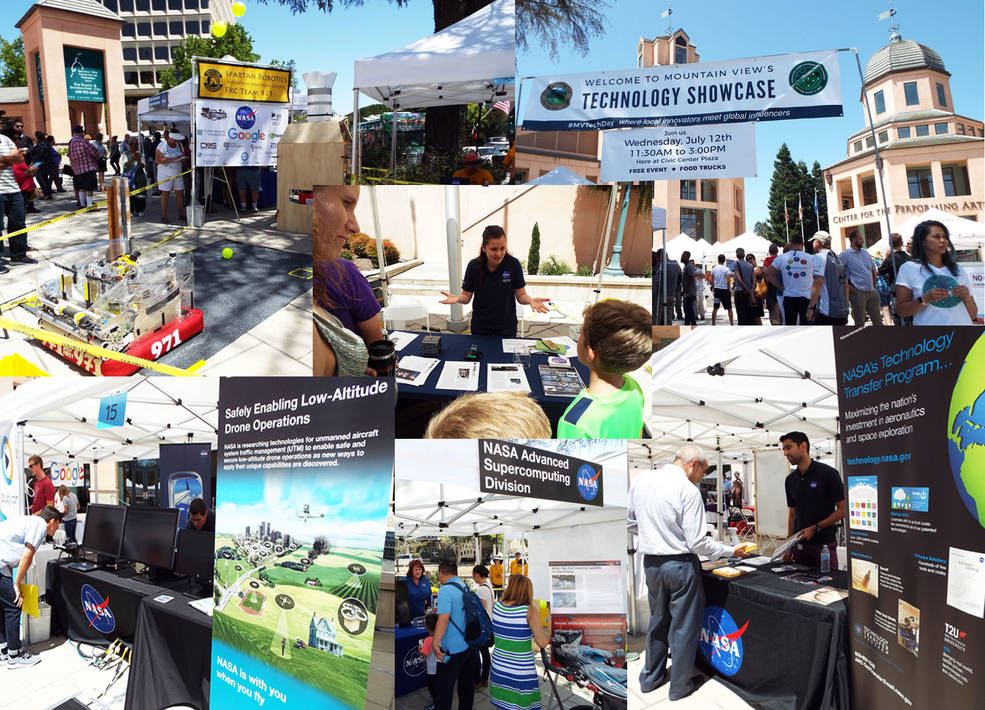
Employees Participate in 4th of July Fun Run/Walk
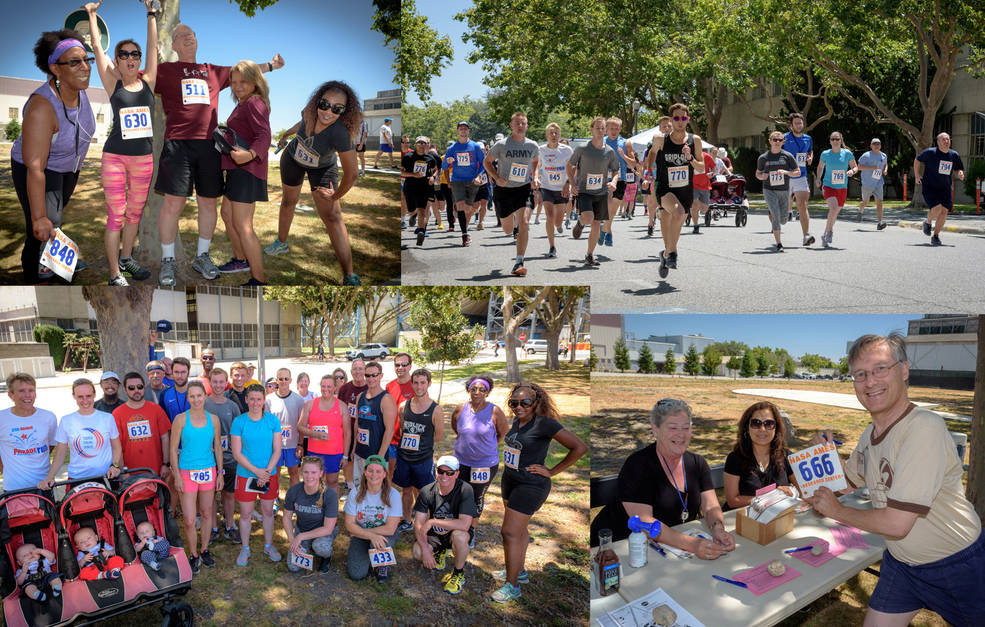
AFDD Flight Projects Rotorcraft Fleet Bids Farewell
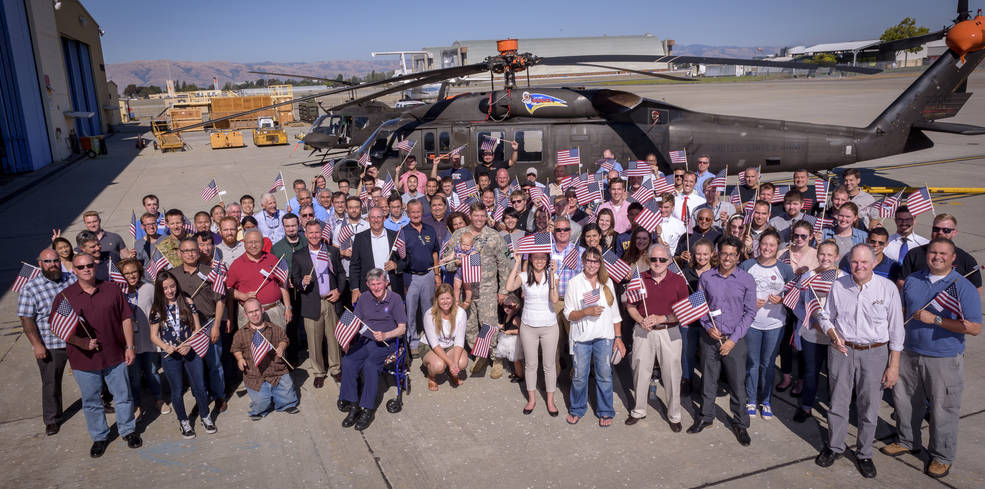
Belikov Introduces Opportunities and Challenges in Searching for Exoplanets
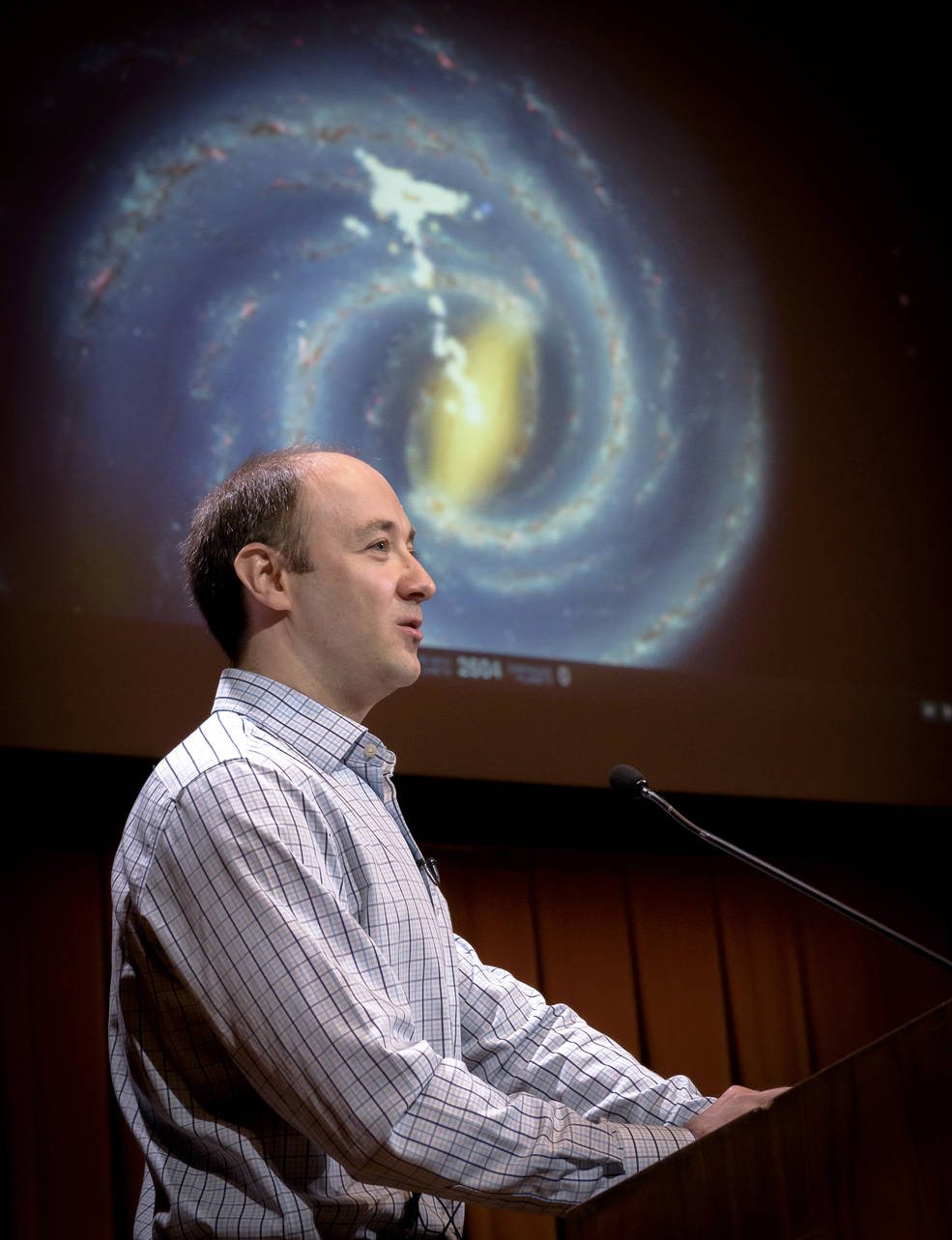
Jakosky Discusses Results from the MAVEN Mission
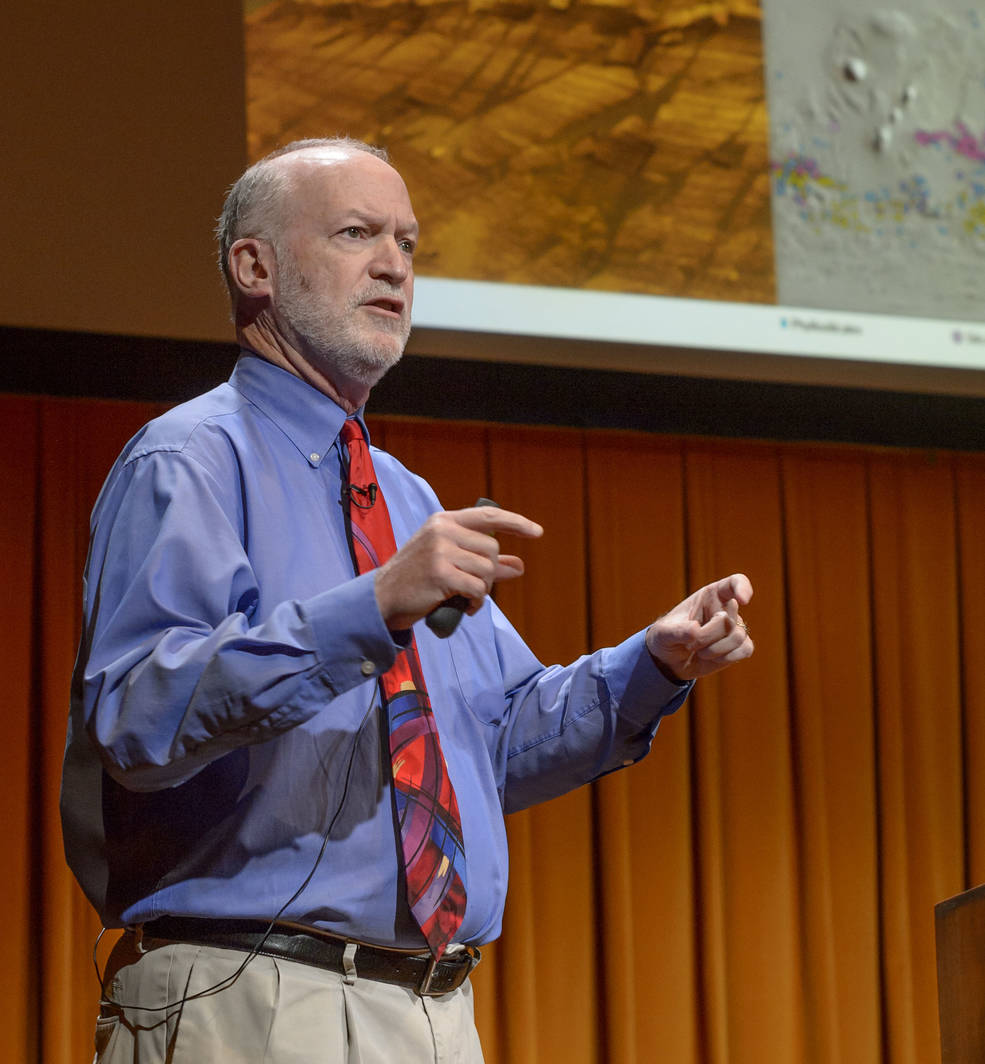
“Learning How to Adapt to Space,” presented by Dr. Patricia Cowings
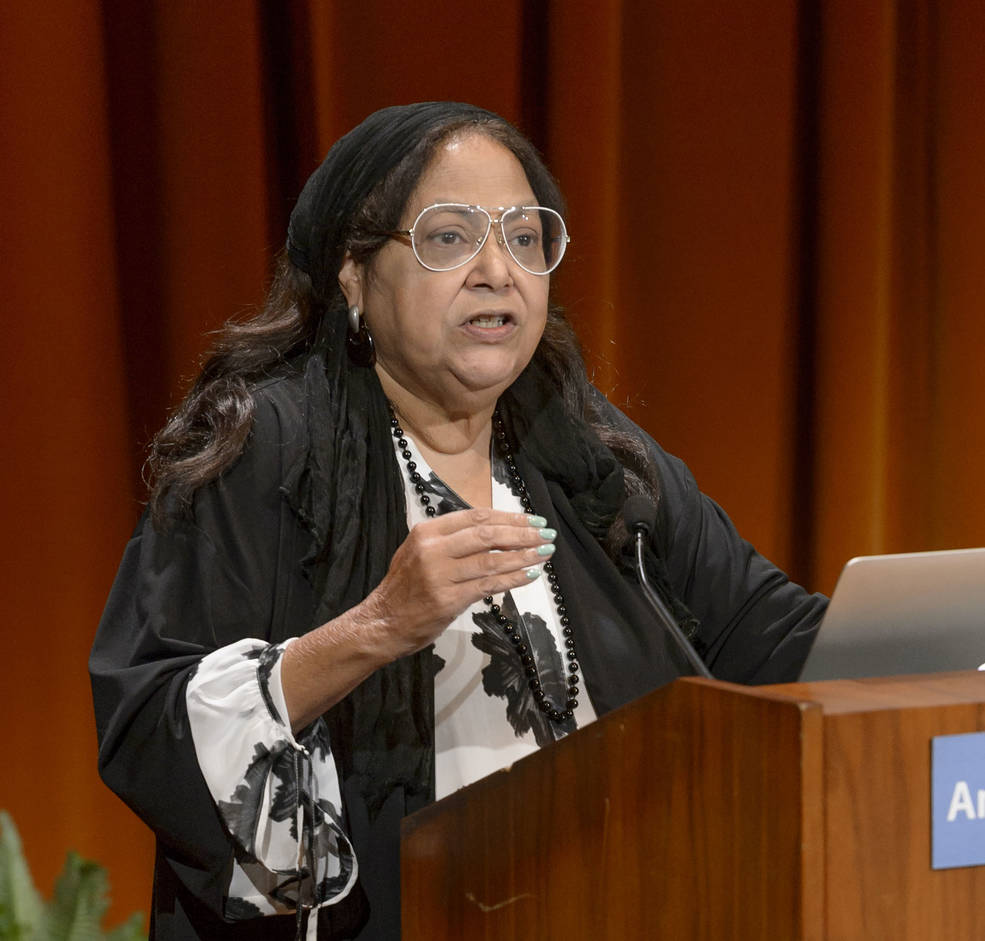
Astronaut Michael Barratt Presents, “The Human in Space: A Basic Primer”
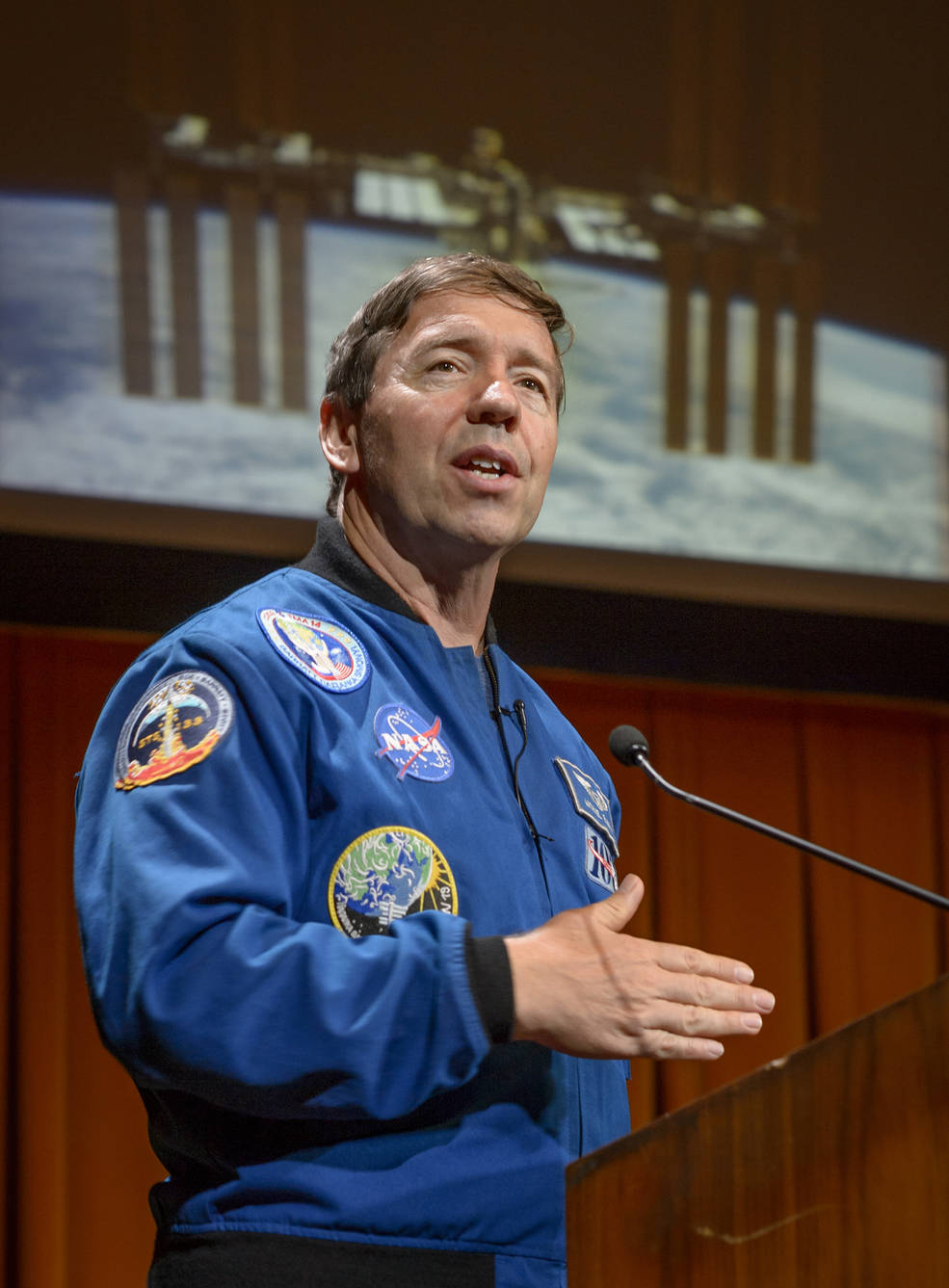
Murakami, D’Amico and Guhathakurta Discuss Wind Tunnels, Astrodynamics and the Upcoming 2017 Solar Eclipse
The Office of the Chief Scientist’s Summer Series colloquiums continued with David Murakami (top left photo) speaking on July 13, 2017, about the significance and technological capabilities of the wind tunnels at NASA Ames; Dr. Simone D’Amico (top right photo) discussed on July 11, 2017, the advancements made in the field of Astrodynamics and Guidance, Navigation and Control algorithms; and Dr. Madhulika Guhathakurta (bottom photo) spoke on July 10, 2017, about NASA’s science, education and communication plans for this year’s solar eclipse in August. Murakami is an aerospace engineer in the Fluid Mechanics Laboratory at Ames, where he is currently involved in development of an unsteady pressure sensitive paint system for use in the wind tunnels. He also is a recent doctoral graduate from the Department of Aeronautics and Astronautics at Stanford University. As part of the NASA Pathways co-op program, he has worked at Ames while pursuing his MS and PhD at Stanford. D’Amico is an Assistant Professor of Aeronautics and Astronautics at Stanford. He is founder and director of the Space Rendezvous Laboratory. Guhathakurta (also known as Lika), is an astrophysicist at Ames and has had the opportunity to work as a scientist, mission designer, instrument builder, directing and managing science programs and teacher and spokesperson for NASA’s mission and vision in the Heliophysics Division.
Senator Harrison Schmitt Presents, “The Moon on the Path to Mars”
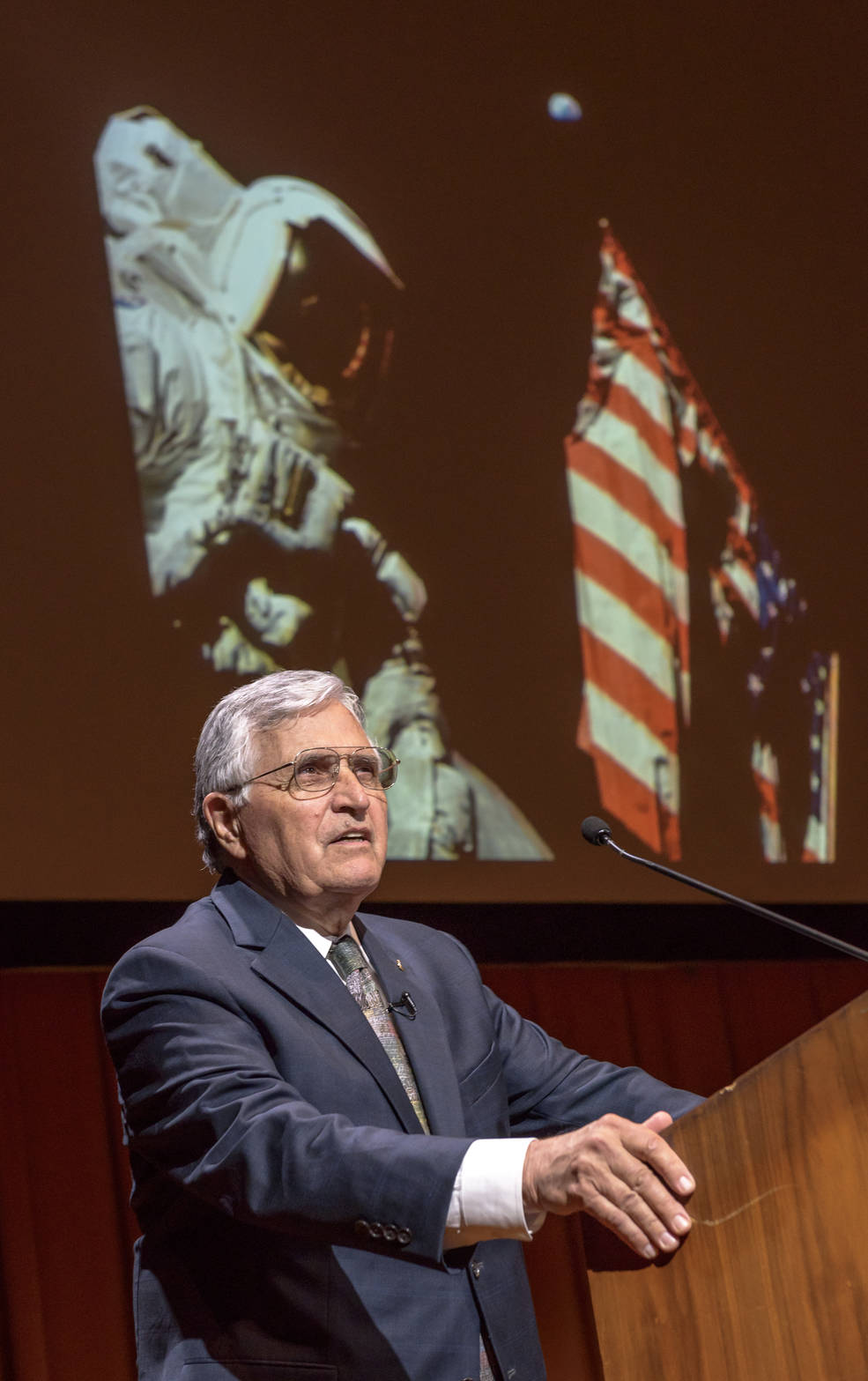
Madavan and Rodriguez Discuss Advanced Air Transport and Tsunami Deposits on Mars
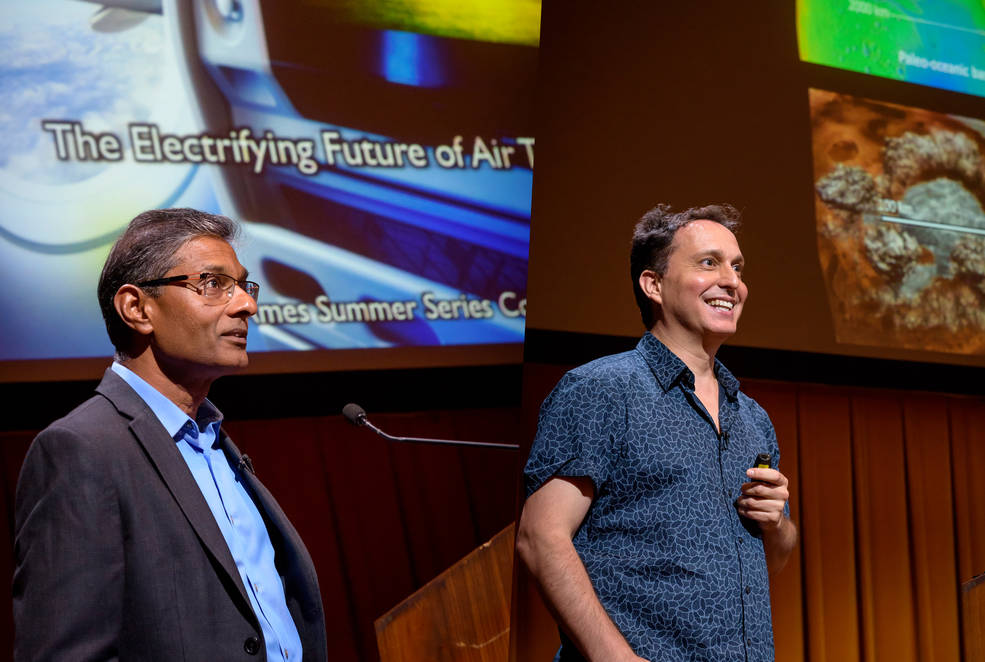
In Memoriam . . .
Former Ames Photographer Tom Trower Passes Away
courtesy of the Press Banner
Tom Norton Trower, 73, passed away peacefully on June 28, 2017 at his home in Bonny Doon. He loved the garden that his fiancee, Jan Nelson, created when they moved there several years ago. One of his favorite pasttimes was to groom her plants and enjoy the many birds at the feeders.
He also took many of the pictures that accompanied Jan’s column, The Mountain Gardener, in the Press Banner. Tom spent his working years as a photographer for NASA Ames. He held two degrees, a political science degree from UC Berkeley and later a BA degree from Brooks Institute of Photography.
Among his many achievements at Ames, was an award he received from NASA for his photography work in documenting the effect of weightlessness on the development of amphibian eggs while in space. Gravity is not required for normal embryonic development and the tadpoles were just fine. He also was involved in photographing the new K9 Rover in the newly built “Mars-scape” test facility in preparation for future missions to Mars.
During his time at NASA, Tom became a long-distance runner participating in many fund-raising relays. It also was during this time that he formed a group with fellow motorcycle enthusiasts who continued over the years riding together on dozens of motorcycle touring and camping trips throughout California and neighboring states.
Tom was a lieutenant JG in the Navy during the Vietnam war and served on a destroyer stationed in the Mediterranean. He enjoyed connecting with his fraternity brothers of Alpha Delta Phi from his Cal days. He was a loyal Giants fan, hopeful Niners fan and happy Warriors fan. He loved all sports.
Tom will be remembered for his integrity and kindness by all who knew him. He is survived by his partner, Jan Nelson, his daughter Kelly Biles, her husband Matt Biles and granddaughters Adelyn and Scarlett of Boulder Creek, son Matthew Trower of San Jose and his partner Katelyn Hussey, and son Ryan Trower and wife Taylor of Denver, Colorado.
Ames Systems Engineer Darryl LeVasseur Dies
The NASA community mourns the loss of Ames Systems Engineer Darryl LeVasseur, who passed away on July 4, 2017. At his young age of 34, this was very sudden and unexpected. Darryl was a brilliant young man with a most gregarious and exuberant personality that endeared him to all who had the privilege of working with him. Darryl’s contributions to NASA and to Metis Technology Solutions were significant. He was on the original team to develop TechEdSat-1 and had been a member of the SPHERES Facility team for the past seven years. Darryl also was the Metis Chief Technologist, leading several of the company’s SBIR proposal efforts. He was a proud graduate of San Jose State University and recently served as an adjunct professor there teaching the Systems Engineering course.
As a systems engineer with the NASA SPHERES Facility, Darryl supported many high visibility efforts, including the repair of the SPHERES ‘blue’ satellite at NASA Ames with a successful re-deployment to the International Space Station (ISS). He was superbly skilled at field striping SPHERES hardware. He was initially a proactive volunteer intern out of San Jose State University.
Darryl was responsible for much of the SPHERES Facility success and a truly valuable and trusted team member through thick and thin. Throughout his NASA career, Darryl demanded a great deal from himself and worked hard and enthusiastically to perform above and beyond while being a team player. Having him on our team has been a true privilege that will never be forgotten.
Darryl was one of Metis’s earliest employees, and earned the Chief Technologist position through his technical excellence, leadership and talent for innovation. Darryl was the principle investigator of a recent Metis Phase 1 SBIR award to develop hardware for the ISS and Astrobee mission. He had countless ideas for new and innovative technologies that he was excited to pursue.
A Celebration of Life for Darryl will be held on Saturday, July 29, 2017, from 2:00 – 5:00 p.m. at the Mountain View Community Center in Rengstorff Park. For more information, please visit: https://sites.google.com/view/darryllevasseur/
Former Ames Aeronautical Engineer David Koenig Passes Away
David George Koenig was born in Saranac Lake, New York on Jan. 10, 1927 to the Rev. William Koenig and Naomi Carmichael. David died peacefully at the age of 90 on June 15, 2017 in Mountain View, California.
He spent much of his youth in Utah, earning his high school diploma from Westminster College in Salt Lake City. After graduating from Oregon State in 1949 with a degree in aeronautical engineering, David was hired by NACA (later NASA) where he worked in aeronautical research and testing for more than 35 years at NASA Ames.
David was a longtime member of Saint Timothy’s Episcopal Church, active on the vestry and community outreach, and he spent many years collecting and distributing donations as a volunteer for Food for All. David will be remembered as unflappable under pressure and always positive and progressive in thought and deed.
He is survived by Jeanne Therkildsen, his wife of 58 years, son Steven (Cindy Taylor) of Sunnyvale, daughter Laura (Donald Endres) and granddaughters Madeline and Naomi of Anchorage, and sisters Mary Wood and Betty O’Connor of San Luis Obispo.
Former Ames Engineer George De Young Dies
George Ellis De Young was born on April 14, 1931, in San Mateo, and died on April 28, 2017, at the age of 86 years in Chico, California. George grew up in Burlingame and the family moved to Los Altos in 1945. After graduating from Mountain View High School, he attended Pacific Radio School in San Francisco and then at the start of the Korean War enlisted in the U.S. Navy as an electronics technician.
While attending Navy Electronics School at Treasure Island, San Francisco, he met and married Marye Kruegel in 1951. After completing his overseas duty, he was assigned to the Stanford University Naval Reserve Officers Training Corps (NROTC) for two years and was honorably discharged from the Navy at the end of the Korean War 1955.
George went to work for the National Advisory Committee for Aeronautics (NACA) at Ames as an electronic instrument maker in November 1955. George and Marye then lived in Sunnyvale. Shortly thereafter, NACA became the National Aeronautics and Space Administration (NASA) in 1960 and following the Apollo spacecraft fire, he became a quality assurance (QA) specialist and a California registered engineer. He worked as the QA manager for several Pioneer and space shuttle instruments, the XV-15 vertical take-off aircraft and the Infra-Red Astronomical Satellite (IRAS), which was being fabricated partially in the Netherlands and partially in Colorado. He retired from NASA in June 1981 and was called back as a consultant to NASA in Huntsville, Alabama, after the Challenger disaster in 1984. George, Marye and their three boys always vacationed at a cabin at Lake Almanor and they bought a lot in the Lake Almanor Country Club (LACC) in 1978. While working for NASA in Boulder, Colorado, George designed a house that he, his brother-in-law Walter Quiggle and younger son, Gerry, built in 1981. George and Marye moved there from Sunnyvale in 1982. While living at Lake Almanor, George worked as the general manager for the LACC Mutual Water Company and Marye worked as a clerk at the Peninsula Market. George and Marye again retired and bought a house in Chico and moved there in 2004. George’s favorite activity was recreational boating and he joined the U.S. Coast Guard Auxiliary in 1973 serving as an officer in the Palo Alto Flotilla 43. After moving to Chico, he then became active in the Coast Guard Auxiliary, Redding Flotilla 39, Chico Detachment. He also was a member of the National Active and Retired Federal Employees and the American Legion Chico Post 17. George was predeceased by his wife Marye, in 2009, after 57 years of marriage and by his sister Margaret Berge and grandson Brian De Young. He is survived by his son Gary L. De Young and Lollie De Young in Chico, Robert De Young in Sacramento, Gerry and Lori De Young in Myers, grandson Jeremy and his wife Andria in Chico and granddaughter, Nicole and her husband Brian Burke in Santa Barbara. He also is survived by great-grandsons Grayson and Caiden De Young in Chico, Curran Burke in Santa Barbara and great-granddaughters Hanna De Young in Fort Jones and Maddie De Young in Chico. In lieu of flowers, donations may be made to the “Brian De Young Trust for Hanna” or to the American Diabetes Association. Condolences may be sent to the family in care of Newton-Bracewell Funeral Home in Chico or at NewtonBracewell.com.




























